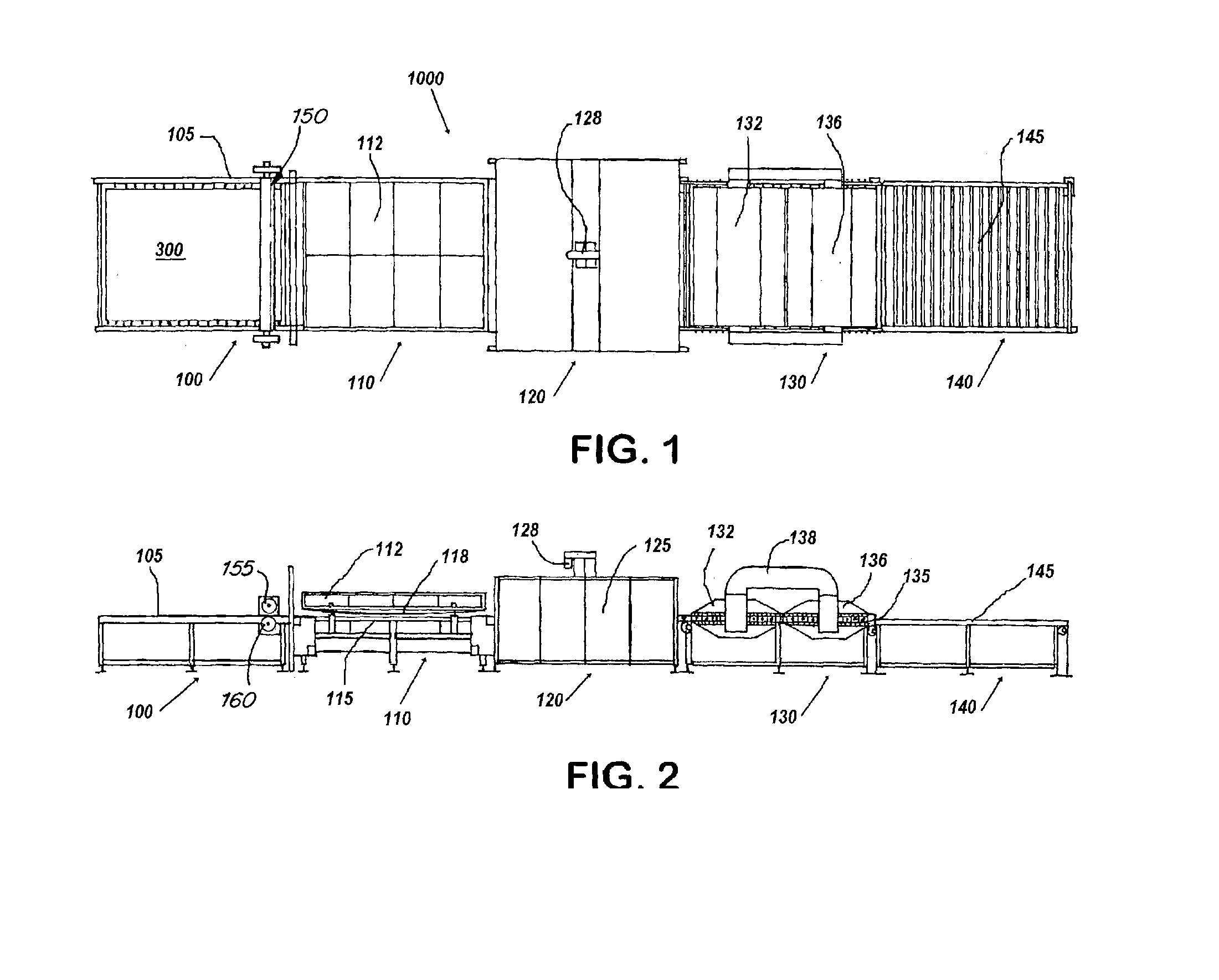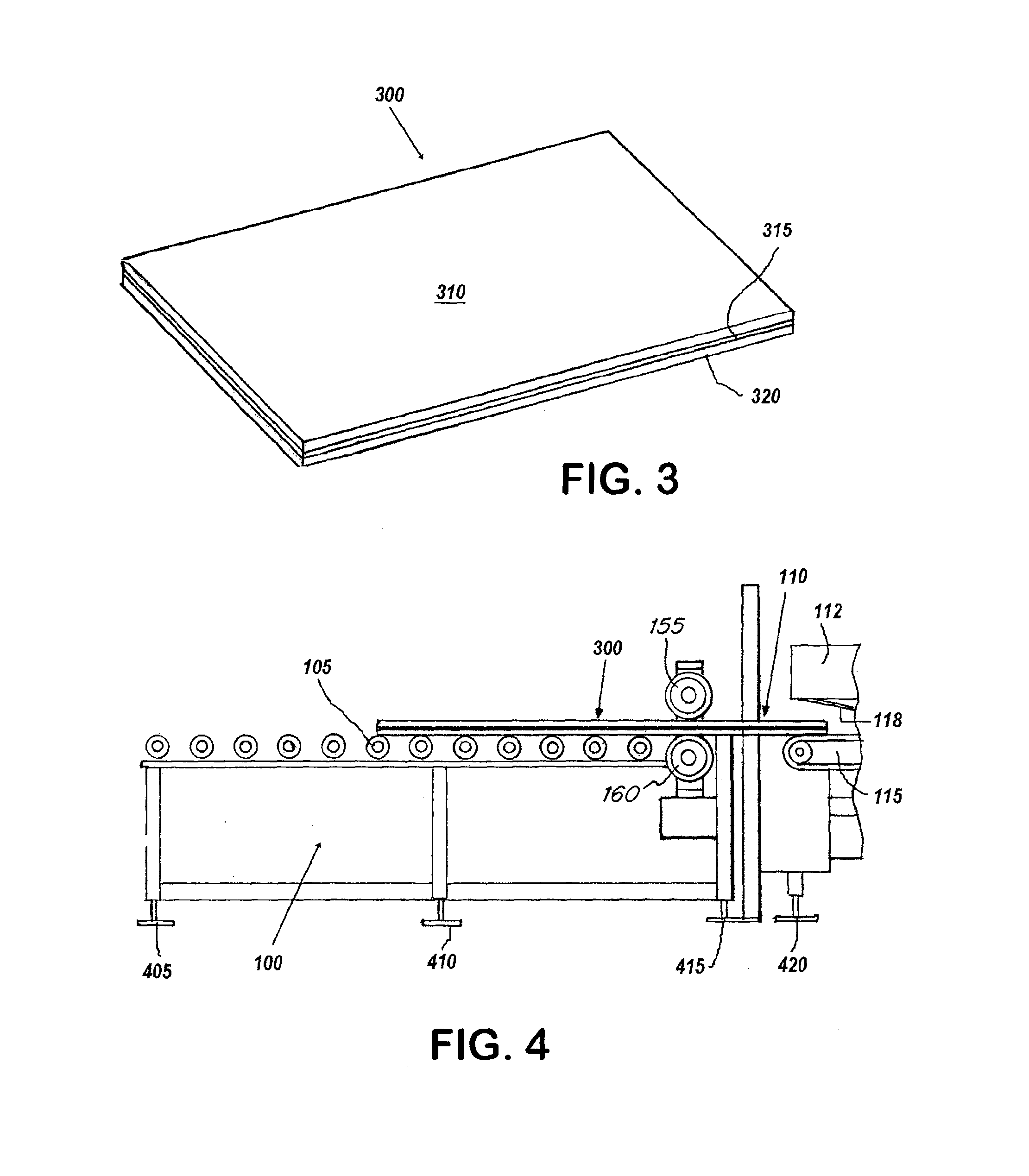Indexing Laminating System
a conveyor system and glass technology, applied in the direction of lamination ancillary operations, chemistry apparatus and processes, glue vessels, etc., can solve the problems of difficulty in heating large glass pieces, prior art glass lamination systems suffer from various deficiencies, and none of these prior art systems provide for glass lamination systems. achieve the effect of promoting water removal
- Summary
- Abstract
- Description
- Claims
- Application Information
AI Technical Summary
Benefits of technology
Problems solved by technology
Method used
Image
Examples
Embodiment Construction
[0073]FIGS. 1 and 2 illustrate a top and side view of a glass lamination system of an embodiment of the invention. FIGS. 1 and 2 show system 1000 having various modules arranged in an assembly for laminating glass.
[0074]FIG. 1 shows module 100, which is where the glass laminate 300 enters the assembly or system 1000. Module 100 has rollers 105, the rollers 105 allowing for the glass laminate 300 to be rolled along the module 100. In certain embodiments, the rollers 105 may be automated or may a conveyor belt instead of rollers 105. Module 100 is an entrance module, where the glass laminate 300 enters the assembly or system 1000.
[0075]In certain embodiments, when a conveyor belt is used, the conveyor belt material is very thin, about 0.010″ thick, so that infrared heating elements may be used. In preferred embodiments, the thickness of the conveyor belt is less than 0.2″ thick. The thinness of the belt allows infrared heat from the infrared heaters to pass through the belt quickly. I...
PUM
| Property | Measurement | Unit |
|---|---|---|
| temperature | aaaaa | aaaaa |
| temperature | aaaaa | aaaaa |
| atmospheric pressure | aaaaa | aaaaa |
Abstract
Description
Claims
Application Information
 Login to View More
Login to View More - R&D
- Intellectual Property
- Life Sciences
- Materials
- Tech Scout
- Unparalleled Data Quality
- Higher Quality Content
- 60% Fewer Hallucinations
Browse by: Latest US Patents, China's latest patents, Technical Efficacy Thesaurus, Application Domain, Technology Topic, Popular Technical Reports.
© 2025 PatSnap. All rights reserved.Legal|Privacy policy|Modern Slavery Act Transparency Statement|Sitemap|About US| Contact US: help@patsnap.com



